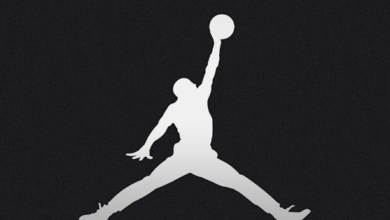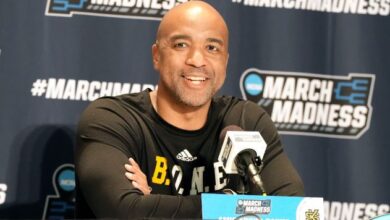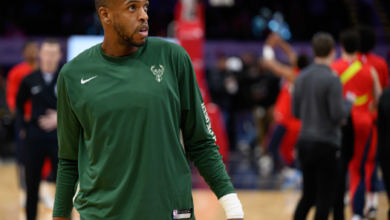Throw-ins, ballstriking, neuroscience: How coaching evolves

They work in the shadows, away from prying eyes. They’re the unseen army Premier League clubs are enlisting in pursuit of glory: the analysts, statisticians, scientists and … surfers? Bobsledders?
– Stream on ESPN+: LaLiga, Bundesliga, MLS, more (U.S.)
Welcome to the world of the specialist coaches. These high-performance experts have a unique understanding of their field, and tap away on an iPad before whispering classified information into the manager’s ear. They’re not your traditional football coaches, all bluster, banter and bold tattoos. They’re data nerds, and proud of it. They’re the guys you see in the dugout with initials on their club tracksuit that you can’t connect to a name.
Who’s that standing next to Mikel Arteta? That would be Nicolas Jover — the set-piece coach who joined Arsenal from Manchester City in July 2021 and helped them to score 16 dead-ball goals last season, the third-highest in the league and 10 more than they managed in 2020-21. The potency has continued this season with Arsenal netting five from dead-ball situations as of Sept. 17, a total bettered only by Tottenham Hotspur (six).
Arteta’s much-improved Gunners are one of several Premier League clubs, including Spurs, Manchester City and Brentford, to task a set-piece coach with improving efficiency in both boxes. These experts once worked in shadowy analysis rooms, out of sight from fans, but detailed postmatch breakdowns are bringing their work into the light.
Liverpool have invested in specialist coaching to help stay apace with Pep Guardiola’s winning machine at Man City. In 2018, former bobsledder Thomas Gronnemark was brought in from Brentford to maximise their efficiency; the club went from 18th in throw-in possession under pressure in 2017-18 to 1st in 2018-19, and scored 14 of the 85 goals in their 2019-20 title-winning season from such situations.
– Meet Liverpool’s secret weapon: Thomas Gronnemark
Before the beginning of that title-winning campaign, Klopp invited fellow German, Sebastian Steudtner to Liverpool’s preseason training camp after watching a documentary about the world-renowned high-wave surfer. Steudtner worked with the players on holding their breath under water with the aim of retaining focus and calm under pressure. The players were able to fully submerge themselves for 10 to 90 seconds when he arrived. By the end of the session, Mohamed Salah and Dejan Lovren were approaching the four-minute mark. The squad was able to draw on the lessons learned from this specialised training during the season as they registered 14 wins by a one-goal margin, and came back for victories against Newcastle United, Tottenham and Aston Villa after falling behind.
Players are appreciative, too. Former Arsenal defender Calum Chambers, for instance, sought out Jover when celebrating after he converted a corner with his first touch against Leeds United in last season’s Carabao Cup. In August, Tottenham’s Dejan Kulusevski said their set-piece coach, Gianni Vio, deserved a pay rise after Harry Kane scored from a corner for the second consecutive game to earn Spurs a 1-0 win over Wolves.
The most progressive clubs, however, don’t only concentrate on set pieces — they’re employing a range of specialists. The minutiae of throw-ins, ballstriking and neuroscience are being assessed and reshaped into an accessible curriculum for teams and players to leverage a marginal gain.
How Brentford led the way
Most football clubs can’t outspend their rivals, and must look elsewhere to find an edge that enhances what they already have. In an increasingly unbalanced financial landscape, specialist coaches have enabled clubs to level the playing field, at least in some respects; just look at Brentford.
In 2012, Matthew Benham, a former derivatives manager and lifelong Brentford fan, bought the club and saved them from extinction before helping to guide them from League One into the Premier League within nine years.
Benham hired high-performance consultant Rasmus Ankersen as co-director of football alongside Phil Giles, with StatsBomb co-founder Ted Knutson as head of player analytics. Data-driven recruitment and the use of specialist coaches were two key components of Benham’s strategy for both Brentford and his other club, FC Midtjylland of Denmark, who he purchased in 2014.
Before moving on to Tottenham, Vio had joined Brentford from AC Milan in the summer of 2015. He was at Brentford with throw-in guru Gronnemark and ball-striking coach Bartek Sylwestrzak. Their job titles attracted sneers from traditionalists, until their results were undeniable. All three also worked with Midtjylland, who became Danish champions for the first time in 2014-15 and, significantly, 25 of their 65 goals were scored via set pieces thanks to work from assistant coach Brian Priske.
“We had huge success in that first season [at Midtjylland], but looking back, we had all the right players in the building,” Benham told ESPN. “I thought, ‘Oh, this is going to be easy,’ but we soon realised it’s not as simple as throwing a load of specialists together. It took us a few years to get it right.”
After Brentford enjoyed an initial upturn during the 2015-16 campaign, finishing fourth in the Championship set-piece table, they weren’t in the top third again — though were in the top half in four consecutive seasons. But the impact since their 2021 promotion to the Premier League has been far more telling, with tactical statistician Bernardo Cueva, who arrived from CD Guadalajara in 2020, curating their set-piece playbook. Only Arsenal, Liverpool and Man City, all of whom have their own dead-ball masterminds — Jover, Dr Niklas Hausler and Carlos Vicens respectively — scored more goals from such situations last season. In 2022-23 so far, Brentford have scored four set-piece goals, the fifth-most in the division, two goals behind Tottenham.
“The Premier League has focused everyone’s minds, because we could pass teams off the pitch in the Championship,” Benham says. “In the Premier League, you don’t have the ball that much.”
The media narrative has painted Brentford as pioneers, but Benham insists it’s “less sexy” and “thinking outside the box,” with their success owing more to “efficiency” rather than “innovation.”
Benham is being modest. Forward-thinking clubs outside of the Premier League may lay claim to the trendsetters tag, but in England, Brentford led the way. Gronnemark is now at Liverpool; as well as moving to Tottenham this summer, Vio was with the Italy national team when they won Euro 2020; Andreas Georgson (set-piece coach) moved on to Arsenal and is now sporting director at Malmo; Jover left Brentford to replace Georgson at Arsenal; Mads Buttergeit (coach at Midtjylland) worked with the senior Denmark squad at Euro 2020 and is now with Germany.
Teaching players how to kick a ball
One detail very few clubs work on is ballstriking. Now, we know what you’re thinking: why would an elite footballer need to learn anything about kicking a football? It’s about the effect you’re trying to put on the ball, be it top spin or knuckleball, or any other variation.
Step forward Sylwestrzak. As well as working with individuals on hitting direct free kicks, Sylwestrzak would collaborate with the set-piece coaches at Brentford and Midtjylland. His job was to teach players how to put the ball on a plate for a teammate.
“At first-team level, technical improvement is almost never on the agenda,” Sylwestrzak, who has also worked for Belgian club Gent, explained to ESPN. “Most people at clubs think about next Saturday and the next three points. Every player, even the very best in the world, would benefit from spending more time on perfecting football’s most fundamental of skills.”
Listening to Sylwestrzak, it’s clear this isn’t so much a job as an obsession that took hold of his life and manifested into a career. Where we see James Ward-Prowse whipping a trademark free kick into the top corner, Sylwestrzak sees an angle and rhythm of approach, upper body coordination, standing foot placement, kicking foot position, swing shape, ball speed, spin and trajectory — the whole shot broken down into its every element.
“I’m obsessed with the details,” says the Poland-born Sylwestrzak, his Anglicised east-European accent bouncing with energy. “I have now committed 23 years to ballstriking — to practice, study and, in the past 13 years, coaching of this skill. I had to do the whole analysis myself from scratch, identifying all the technical variables and understanding how to manipulate them in order to achieve the desired effect with regard to the spin and trajectory of the ball.”
Sylwestrzak has had several prosperous students, both in English football and in other European divisions, although the names of most of his clients are closely guarded information. His website details the impact of his work with some of those players, including Everton‘s Neal Maupay, former Premier League stalwart Craig Gardner (Aston Villa, Birmingham, Sunderland), Bournemouth’s Danish midfielder Emiliano Marcondes and West Bromwich Albion’s John Swift, who scores some spectacular free kicks.
Like a golf coach, Sylwestrzak observes the swing and provides technical feedback. Every type of strike can be broken down, and then coached.
“Everything I do is designed to achieve the best possible contact with the ball and the desired spin and trajectory,” he explains. “For example, if you want to apply forward spin, the mechanics of the connection determine everything else.
“The foot position will determine the angle of approach, the position of the standing foot will be determined by the swing shape, and that will again tie in with how your upper body is coordinated. Then you’ve got to factor in things such as the rhythm and momentum of the approach. All of this is bespoke to the player.”
Soccer is 10 years behind U.S. sports
Allan Russell worked as England’s attacking coach at the 2018 World Cup, attracting much admiration. The Scotsman helped England to post a tournament record when they scored nine goals from set pieces, including four from corners. He provides insight into the level of detail that goes into creating complex routines.
“There’s basic strategy and then there’s the detail that’s needed to make it productive,” he says. “When I was living in the U.S., I spent a week with NFL franchise the Oakland Raiders [now the Las Vegas Raiders], so I could see how their specialist coaches worked and what results they yielded from constant repetition.
“I learned a lot about losing your man and creating space in congested areas. It was incredibly useful.”
Russell thinks there’s plenty more to be harvested from American sports. “We’re 10 years behind the U.S.,” he says. “But, in time, the make-up of coaching staff at Premier League clubs will start to look more like an NFL franchise, with more specialist coaches working on the details.”
After a spell as assistant manager at Aberdeen, Russell joined manager Dean Smith’s setup at Championship club Norwich City this summer, the latest stop in a coaching career in which he has optimised the goal-scoring capabilities of elite attacking units and individual marksmen. The former Kilmarnock player has distilled his own process into a syllabus: Superior Striker.
In June 2012, while playing for Orange County SC in the USL Championship in the United States, Russell founded his attacking-specific training program that uses data and analytics to improve performance. When his playing career ended in 2014, he returned to England and focused on his new venture. Soon, he would have the likes of Aleksandar Mitrovic joining him for sessions that dissected the art of goal scoring like never before. The Serbian striker has since gone on to net 103 goals in 186 games for Fulham, and nine in seven Premier League appearances this season, breaking multiple scoring records along the way.
Gareth Southgate saw an opportunity to integrate Russell’s specialised approach into his England setup, and hired him in 2017. The focus on open-play finishing and set-piece routines paid dividends as England reached the World Cup semifinals a year later.
“We are all top players but he is always coaching us things that give us an edge,” England captain Harry Kane said.
That edge is supplied by a unique understanding of the finer details. “When I was playing, I wasn’t coached enough on the intricacies that make the difference,” says Russell, formerly a striker with Forest Green Rovers. “It’s a game of small margins. You can throw loads of irrelevant stats at players, but if you can give them clarity, you’ll get their buy-in — for instance, telling them that changing the angle of their first touch inside the box will improve their chances of scoring.
“We’re 10 years behind the U.S. But, in time, the make-up of coaching staff at Premier League clubs will start to look more like an NFL franchise, with more specialist coaches working on the details.”
–Allan Russell
“If their first touch is forward, there’s an 80% chance a defender affects their shot on goal. If it’s sideways or backwards, this drops to 60% and they have a better chance of getting their shot off. Those details make a difference.”
It worked for Conor Washington and Andre Gray in the 2015-16 EFL season. Both strikers hit their highest single-season totals that year while following the Superior Striker programme. Gray helped fire Burnley into the Premier League with 23 goals, while Washington scored 15 for League One side Peterborough United, prompting Championship club Queens Park Rangers to sign him in January 2016.
If specialist coaches work for strikers, then, could they work for, say, a full-back?
“I don’t think so,” Russell says. “Attacking players have a different mindset: there’s an element of narcissism and selfishness that you don’t get with other players, who tend to be more humble. Attackers want the limelight, so you need a specialist coach who can handle them.”
How specialists can get inside a player’s head
There’s a specialist coach to guide every aspect of attacking play, but football is psychological as well as physical and technical.
Coach players all you want, but in-game intelligence is also vital, with the body’s control centre — the brain — holding the key to decisive execution. This is where neuro11 comes in with “neuroscientific data-based training for elite athletes.”
“It’s about bringing specific players before a set piece into the right mindset, by doing the stuff you do on the pitch,” Liverpool boss Jurgen Klopp said at the end of last season. “Everything gets measured, they’re neuroscientists. It’s a very interesting and important new chapter for us.”
Liverpool had beaten Chelsea in two penalty shootouts to win the FA Cup and Carabao Cup, and Klopp was praising the “incredible impact” neuro11 can have.
You may have seen Liverpool‘s Trent Alexander-Arnold wearing headgear that wouldn’t have looked out of place in Doc Brown’s laboratory in “Back to the Future.” This equipment measures electrical activity in his brain when taking free kicks, corners and penalties.
“We record the brain activity to give us objective feedback,” neuro11 co-founder Hausler explains. “Then we speak with the player to understand their mental and emotional state during moments of high pressure and stress. We want the players to be free of distraction and negative thoughts, so their decision-making is faster and more precise.”
In psychological terms, when a player is faced with a stressful situation such as a penalty, there is a reaction in the amygdala — the part of the brain detects threats, and triggers an appropriate response from the body. neuro11 wants to help players optimise their response to fear, using both psychology, the study of behaviour, and neuroscience, of biological and chemical processes in the brain and nervous system.
When probed about future possibilities, Hausler stays tightlipped, but admits: “This is just the beginning. Neuroscience is a goldmine.”
Just the beginning for specialist coaches
The discovery of gold usually brings a rush of miners seeking their fortune. Just look at the number of clubs employing set-piece coaches since Brentford started the trend in England: Arsenal, Manchester City, Manchester United, Liverpool, Norwich and Tottenham, yes, but other clubs such as Leeds United, West Ham and Chelsea have assigned the responsibility to members of their coaching staff.
Football, a notoriously insular world governed by traditions, is opening its borders. It remains suspicious of outsiders, however.
Sylwestrzak offers an opinion endorsed by other specialists: “There’s still insufficient technical instruction that’s specific to various aspects of the game. Compared to other sports, football is so far behind. In the area of ballstriking, the margins aren’t small; there are big technical deficiencies at the top level of the game.”
When a CEO sees shortcomings in the running of their business, they seek remedies. That’s what Benham did at Brentford. He accepted that he wasn’t an expert in every aspect of performance, and hired the relevant specialists: coaches obsessed with their craft and indifferent to football’s established practices. But, as Benham explained, hiring is just one part of a cohesive strategy.
Whether you’re the little guy looking for an edge, or the heavyweight fighting for titles, a specialist’s insight is crucial. “It can be the difference between winning and losing,” Hausler affirms. “Simple as that.”
Source link





